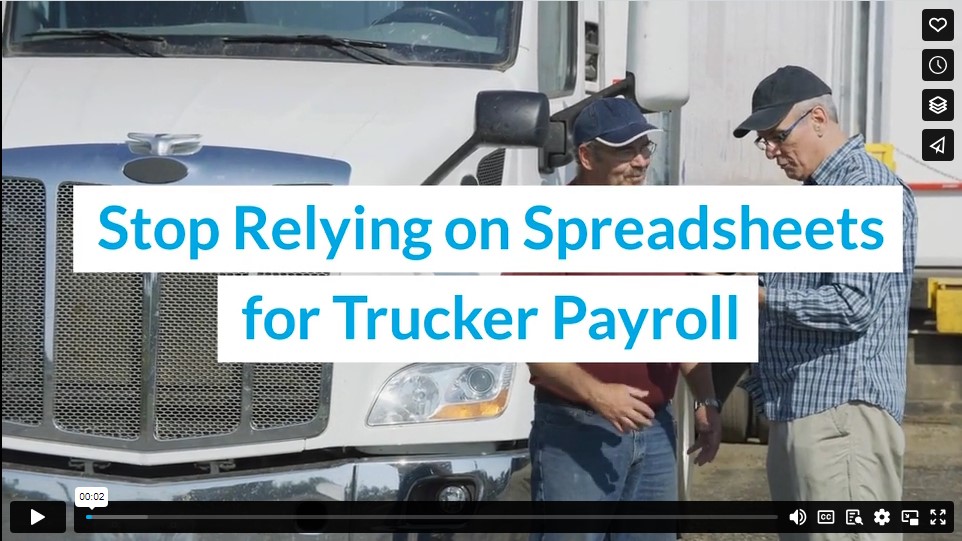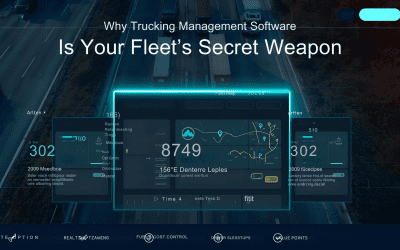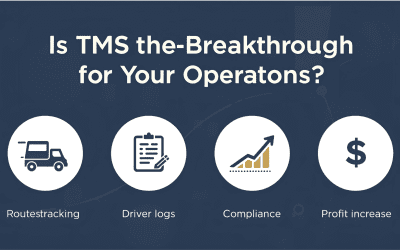In the fast-paced world of truck fleet management, staying on top of payroll can be as daunting as navigating rush hour traffic. While spreadsheets have long been the go-to tool for many companies, they may not be the best choice when it comes to managing drivers’ payroll.
Here’s the thing: while spreadsheets may initially seem like a convenient and efficient solution, managing payroll in the trucking industry goes beyond basic calculations. As the business grows, so does the complexity. The expanding employee base, intricate payroll data, and ever-changing compliance requirements create a perfect storm of challenges that Excel sheets are no match for.
In this article, we’ll explore the limitations of spreadsheets and highlight why trucking companies should seek more suitable options for managing drivers’ payroll.
Why spreadsheets aren’t ideal for managing payroll for trucking companies.
1. Rely on manual processes
Spreadsheets do not facilitate the digitization of payroll operations, as they still rely on manual processes. Despite using a computer, tasks such as generating salary slips, proof collection, and other payroll functions must be handled manually. This limitation prevents the full benefits of digitization from being realized, hindering productivity and efficiency in managing drivers’ payroll.
2. Lack of automated compliance features
Spreadsheets cannot ensure statutory compliance automatically. With no built-in automation for computing taxes, staying updated on tax law changes becomes a manual and time-consuming process. This places the onus on the user to ensure accurate reporting for tax returns, exposing the business to non-compliance risks and potential penalties.
3. Are vulnerable to errors
The manual data entry required by spreadsheets introduces a significant risk of errors and compromises data integrity, especially when it comes to payroll data. With manual entry, the likelihood of incorrect calculations and errors increases many-fold, potentially resulting in discrepancies. Moreover, sharing spreadsheets among multiple individuals within a department amplifies the chances of inaccurate information being entered and computed.
4. Do not offer real-time data
Spreadsheets do not provide real-time data capabilities, which can significantly impact fleet management for drivers’ payroll. Fleet managers heavily rely on manual updates to monitor crucial metrics such as driver behavior, fuel consumption, and vehicle locations. This reliance on manual data makes it challenging to respond promptly to issues such as vehicle breakdowns or accidents. Consequently, the lack of timely information may result in increased expenses and delays.
5. Have security risks
Spreadsheets lack adequate security measures to protect confidential information, thereby creating data integrity and confidentiality risks. Manual data entry further increases the potential for security breaches and errors. Unauthorized access to spreadsheets can result in misuse or data loss. When spreadsheets are shared around between employees, you run the risk of inaccurate information and compromised the confidentiality of driver-related payroll data.
6. Hard to integrate
Integrating spreadsheets with other business applications can be difficult. As your payroll data expands, seamless integrations with other applications become essential to prevent HR personnel from duplicating work. However, spreadsheets lack direct compatibility with other systems, so they rely on intermediary applications for integrations.
7. Difficult to scale
As your trucking company expands, so does the need for a robust payroll system tailored to your drivers. But relying solely on spreadsheets for payroll management can lead to various challenges. The larger the spreadsheet, the higher the probability of errors and broken formulas. Moreover, large spreadsheets become increasingly cumbersome for both drivers and administrators.
8. Multiple versions with different data
Initially, everyone may work from the same data, but it won’t remain that way for long. Whenever someone modifies the master spreadsheet, they must upload it to a central repository to communicate the changes to the rest of the HR team. But if they forget to do so, you’ll have multiple versions of the same spreadsheet containing slightly different data. That’s a recipe for payroll disaster.
Trucking management software is a great alternative.
Excel is valuable for creating charts and calculations, but it falls short in efficiently managing drivers’ payroll. Fortunately, a great alternative exists in the form of trucking management software (TMS). Modern TMS is equipped with capabilities that automate manual payroll processes. With real-time data and automated alerts, it can help you minimize errors and reduce costs. Additionally, TMS makes it easier to organize and secure payroll data for trucking companies. With data storage options like cloud servers, the chance of any data loss is significantly reduced.
Infographic
Navigating payroll complexities is likened to rush hour challenges, revealing the limitations of traditional spreadsheets. Explore drawbacks of spreadsheets like manual processes, lack of automated compliance, vulnerability to errors, absence of real-time data, security risks, integration challenges, and scalability issues. Uncover the risks of multiple spreadsheet versions. Discover the efficiency gap in using Excel for payroll and the trucking management software (TMS) alternative.

Video




